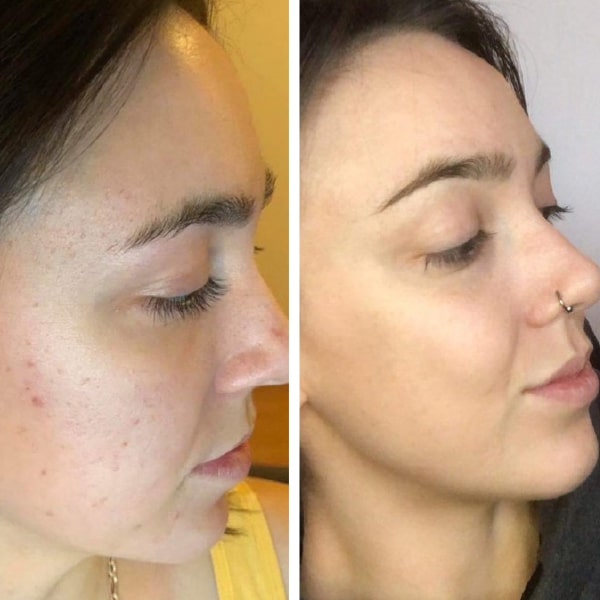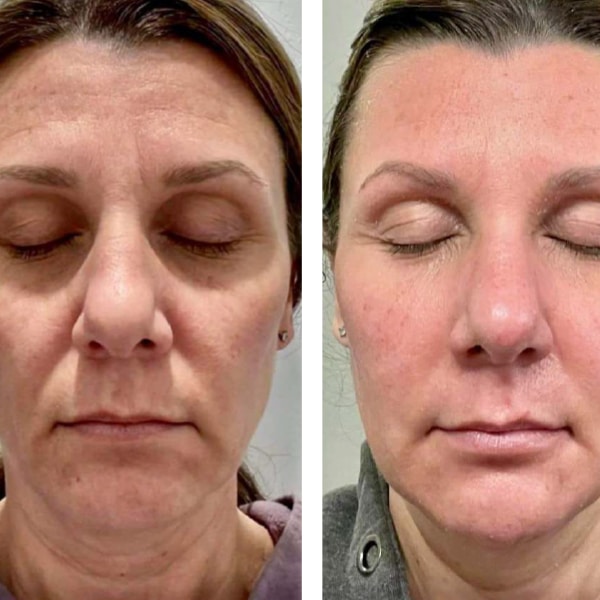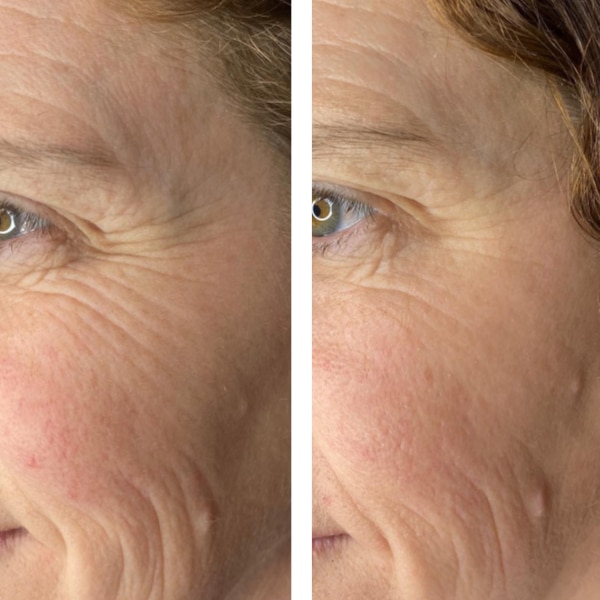Louise Walsh CoolJet™Cold Plasma
What is CoolJet™?
CoolJet™ by Louise Walsh is a revolutionary Cold Plasma Device that harnesses the power of cold atmospheric plasma to deliver exceptional skin sterilization, disinfection, and improvement benefits. This cutting-edge device represents a significant advancement in skincare technology, offering a safe, gentle, and effective solution for various skin conditions.
CoolJet™ operates at or near room temperature, generating controlled and ionized gas to produce an array of reactive species, including ions, electrons, and free radicals. These reactive species work in synergy to target and neutralize harmful bacteria, viruses, and pathogens on the skin’s surface, providing a powerful sterilization and disinfection process without causing thermal damage.
One of the key advantages of CoolJet™’s cold plasma technology lies in its potential to aid in the treatment of chronic skin conditions, acne, and dermatological disorders by reducing the microbial load and promoting a healthier skin environment. Unlike traditional high-temperature plasma devices, CoolJet™’s non-invasive and gentle nature makes it suitable for
all skin types, ensuring minimal discomfort and downtime for users.






Cold plasma devices, also known as non-thermal or atmospheric pressure from gas molecules, creating ions (positively charged) and electrons plasma devices, work based on the principles of ionization and energization (negatively charged). The presence of these charged particles transforms of gasses. The term “cold” refers to the fact that the plasma is generated at or near room temperature, which differentiates it from traditional thermal plasmas or ibroblast’ devices that require high temperatures.
Cold plasma is typically not considered a high-frequency phenomenon. Cold plasma, also known as non-thermal plasma, operates at frequencies in the radiofrequency (RF) and microwave range, which are relatively lower compared to high-frequency devices. In the context of plasma devices used in medicine and skincare, such as the CoolJet™ device, the frequency of the plasma discharge is generally in the range of 20 to 30 kHz, which is not considered high frequency.
High-frequency devices typically operate at much higher frequencies, often in the megahertz (MHz) or gigahertz (GHz) range. These high-frequency devices are commonly used in various applications, including wireless communication, electronics, and medical devices like radiofrequency ablation.
CoolJet™, a state-of-the-art Cold Plasma Device, operates on the principles of Cold Atmospheric Plasma (CAP). As part of this special type of cold plasma, CoolJet™ generates highly energetic electrons through pulses between 104-6 seconds and 104-9 seconds at atmospheric pressure. The device boasts a higher voltage (around 10,000 volts) and a lower frequency range (approximately 20 to 30 kHz), distinguishing it from other plasma technologies. Thanks to its short pulses and little energy exchange with the surroundings, CoolJet™ provides safe and effective skin sterilization, disinfection, and improvement.
Its cutting-edge technology has found widespread use in plasma medicine, becoming increasingly popular as an off-the-shelf device for a wide range of skincare applications. With its ability to deliver impressive results without causing significant thermal damage, CoolJet™ stands as a powerful tool for rejuvenating and enhancing the skin’s appearance.
Cold plasma treatment, specifically delivered by devices like the CoolJet™, acts on the very superficial layer of the skin. Cold Atmospheric Plasma (CAP), which is the type of cold
plasma used in the CoolJet™ device, is generated at atmospheric pressure and typically affects the outermost layer of the skin.
The exact depth of penetration may depend on factors such as the intensity of the plasma, the treatment time, the application technique, and the specific condition being treated.
The goal of cold plasma treatments is often to stimulate collagen production, promote skin rejuvenation, and improve the skin’s appearance and texture without causing significant
trauma to deeper skin layers.
It’s important to note that cold plasma treatments are non-invasive and non-ablative, meaning they do not remove or damage the outer layers of the skin. As with any skincare treatment, the depth of penetration and effectiveness can vary from person to person, and multiple sessions may be needed to achieve the desired results. By your clients consulting with you as a qualified skincare professional or medical provider can help determine the most appropriate treatment plan based on individual skin concerns and treatment goals.
Yes, there can be reactions to cold plasma treatment, but they are generally mild and temporary. Cold plasma treatment is considered safe for various applications, including skincare and medical uses, as it operates at or near room temperature, minimizing the risk of thermal damage to the treated area.
Some common reactions to cold plasma treatment may include:
Redness: After a cold plasma treatment, your client may experience temporary redness in the treated area. This is a normal reaction and usually subsides within a few hours to a day.
Swelling: In some cases, mild swelling may occur in the treated area. Similar to redness, this reaction is typically temporary and should resolve relatively quickly.
Dryness or Tightness: Cold plasma treatment can cause temporary dryness or a feeling of tightness in the skin. This is often a transient effect and can be managed with appropriate skincare products.
Sensitivity: Some individuals may experience increased sensitivity in the treated area, particularly if the skin was already sensitive before the treatment.
Peeling or Flaking: In certain cases, the treated skin may go through a phase of mild peeling or flaking as it regenerates. This is a normal part of the skin’s healing process and usually improves over time.
It is important to note that individual reactions to cold plasma treatment may vary based on factors such as skin type, the specific treatment parameters used, and the area being treated. Following the post-treatment care instructions provided by the skincare professional or the device manufacturer can help minimize any potential reactions and promote optimal results.
While cold plasma treatment is generally safe, it is essential for your client to consult with you as a qualified skincare professional or medical provider before undergoing any cosmetic or medical procedure to determine if it is suitable for your specific needs and skin condition. They can provide personalized recommendations and ensure the treatment is performed safely and effectively.
Cold Plasma Treatment and Fibroblast Hot Plasma are two different approaches to skin treatment that use plasma technology but work in distinct ways:
Temperature
The main difference between the two treatments lies in the temperature of the plasma generated. Cold Plasma Treatment operates at or near room temperature, making it non-thermal.
In contrast, Fibroblast Hot Plasma treatment involves the use of thermal plasma, which means that the plasma generated is at higher temperature.
Heat Generation
Cold Plasma Treatment does not cause significant heating of the skin during the procedure, as the plasma is cold or only slightly warm.
It focuses on utilizing the reactive species and ions to achieve its effects without thermal damage. On the other hand, Fibroblast Hot Plasma treatment involves more direct heat application to the skin, which aims to create controlled micro-injuries and stimulate collagen production through heat-induced tissue sublimation.
Skin Tightening
Fibroblast Hot Plasma treatment is often used for skin tightening and wrinkle reduction, as the heat-induced collagen production helps improve skin elasticity and firmness. Cold Plasma Treatment, while it can stimulate collagen production over time, may have a more generalized effect on the skin, promoting overall skin health and rejuvenation without the specific emphasis on skin tightening.
Application Techniques
The application techniques of the two treatments also differ. In Cold Plasma Treatment, the plasma is usually applied directly to the skin using a
specialized device or nozzle. In Fibroblast Hot Plasma treatment, the plasma is often delivered using a handheld device or pen-like applicator that creates small controlled thermal injuries in the skin.
Downtime and Recovery
Due to the non-thermal nature of Cold Plasma Treatment, it typically involves minimal downtime, and patients can resume normal activities immediately. In contrast, Fibroblast Hot Plasma treatment may cause more noticeable redness, swelling, and scabbing in the treated areas, resulting in a longer recovery time.
Yes, cold plasma treatment has been shown to trigger collagen remodeling in the skin.
CoolJet™ by Louise Walsh is a versatile and advanced Cold Plasma Device that addresses a wide range of skin concerns with remarkable efficacy. From juvenile acne and active acne with scars to reducing pigmentation and combating signs of aging, CoolJet™’s cutting-edge technology offers comprehensive solutions for various skin issues. Its unique capabilities extend to soothing rosacea, minimizing pore size, and brightening and tightening the skin for a radiant and youthful appearance.
With its non-invasive and safe approach, CoolJet™ harnesses the power of cold atmospheric plasma to stimulate collagen production, rejuvenate the skin’s cellular structure, and promote overall skin health. Experience the transformative benefits of CoolJet™ as it pioneers the way to perfection, leaving you with visibly improved and revitalized skin that glows with renewed confidence. Say goodbye to skin concerns and embrace the brilliance of CoolJet™’s results-driven treatments for a complexion that exudes timeless beauty.
Plasma technology has emerged as a powerful tool for reducing pathogen concentrations on contaminated surfaces. By destroying bacteria, viruses, fungi, and prions, plasma offers a robust disinfection and sterilization solution. What makes it even more appealing is that atmospheric pressure air plasmas, like those produced by Piezoelectric direct discharge (PDD), can achieve strong disinfection without the need for costly vacuum equipment or toxic chemicals. This eco-friendly approach is gentle on surfaces, impacting only a thin layer, making it ideal for sensitive materials like living tissues and open wounds.
Yes, cold plasma treatments can help tighten skin on the body. Cold Cold plasma treatments can be effective in reducing the appearance of loose or Atmospheric Plasma (CAP), as delivered by devices like the CoolJet™, sagging skin on various areas of the body, such as the abdomen, arms, thighs, has been found to stimulate collagen production and promote skin and buttocks. The remodeling of collagen contributes to a more toned and rejuvenation. Collagen is a crucial protein that provides structural youthful-looking skin texture.
The immediate results of cold plasma treatments, such as CoolJet™ or other cold plasma devices, can vary depending on the specific treatment, the individual’s skin condition, and the treatment goals. In some cases, you may notice some immediate improvements, while in others, the results may be more subtle and develop gradually over time.
